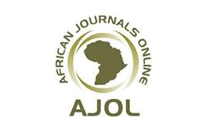Mansoura Veterinary Medical Journal
Document Type
Original Article
Keywords
Shiga toxin, buffalo meat, E. coli, Egypt.
Abstract
Objective: To identify the frequency of STEC in the buffalo meat samples tested. Samples: 110 samples Methods: A total of 110 buffalo meat samples were purchased from retail stores in Mansoura, Egypt. Each individual sample was packaged into a sterile plastic bag, and transported in an insulated icebox to the laboratory as soon as possible. The microbiological examination was performed at the research laboratory of the Food Hygiene and Control Department, Faculty of Veterinary Medicine, Mansoura University. Results: The conventional technique for isolation of this pathogen based on the cultural methods In which E. coli was detected in 95.4% (105/110) of the examined buffalo meat samples, however only 81.82% (90/110) of the tested samples were biochemically recognized as E. coli spp. Whereas, serological and molecular identification verified the presence of E. coli spp in 63.64% (70/110) among all examined buffalo meat samples. However, 74 serologically examined E. coli isolates were identified into 6 dissimilar serogroups.4 isolates of 7 E. coli O157:H7 carry stx1, stx2, intimin and α hemolysin genes together. Antibiotic resistance profile revealed that all isolates were resistant to erythromycin with MAR index .397.
How to Cite This Article
EL- Sayeh, Amira Mahmoud
(2024)
"Characterization of multidrug-resistant E. coli O157 isolated from buffalo meat marketed in Dakahlia Province.,"
Mansoura Veterinary Medical Journal: Vol. 26:
Iss.
1, Article 4.
DOI: https://doi.org/10.35943/2682-2512.1251
Receive Date
27 Jul 2024
Accept Date
13 Nov 2024
Publication Date
2024






